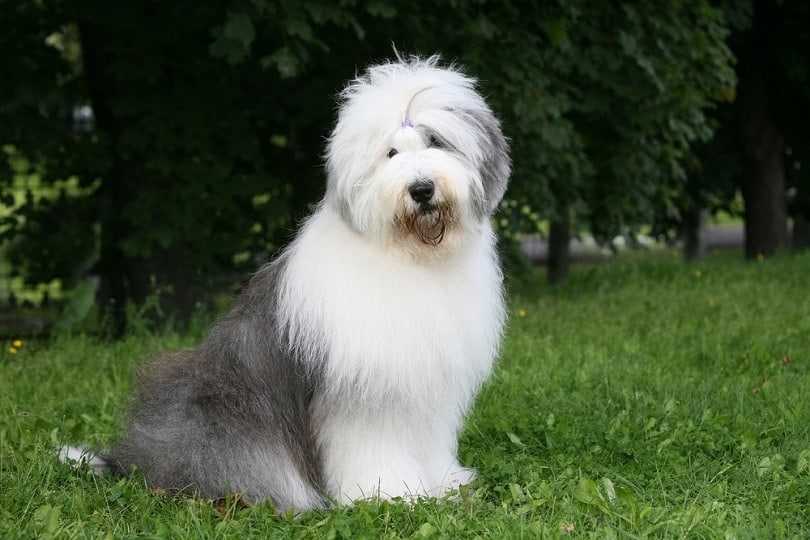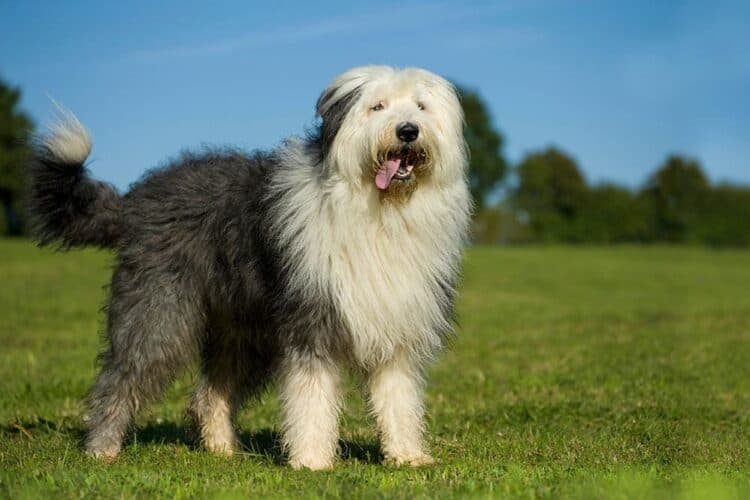Old English Sheepdogs are a perfect combination of goofy and fluffy. These dogs want nothing more than to love you, please you, and protect you. They’ve even played some major roles in Hollywood! Is it any wonder why people love this breed?
Unfortunately, these dogs aren’t hypoallergenic. They have such long fur with a double coat that it’s inevitable for someone with allergies to sneeze or get itchy eyes. If you have serious allergies, this definitely isn’t your breed.
If you already have an Old English Sheepdog (OES) in your house, there are a few things you can do to limit the allergens in your home, which we’ll discuss in this post. But first, let’s answer the ever-looming question: are Sheepadoodles better for allergies than Old English Sheepdogs?
Can You Be Allergic to a Sheepadoodle?
Those with dog allergies assume they’re allergic to the fur and saliva dogs produce, and to some degree, that’s true. All dogs have proteins in their urine, saliva, and dander. Usually, people with dog allergies are allergic to one or two of these proteins. That’s why dogs that hardly shed or drool are considered hypoallergenic. And that leads us to poodle mixes.
Poodle mixes are some of the most popular dog breeds because they’re considered hypoallergenic. Plus, they’re too adorable to resist. The Sheepadoodle is a cross between a poodle and an OES. But does this actually make an OES hypoallergenic?
While crossing these two breeds can certainly help reduce dog allergens, predicting which parent’s coat a Sheepadoodle will inherit is difficult. So, you can still be allergic to a Sheepadoodle if the dog’s genetics lean heavily toward the OES side.
The good news is that it can lean the other way. A Sheepadoodle can inherit the poodle’s genetics and be much better for those with allergies. It all boils down to finding a reputable breeder that knows the genetic information about the puppy and the puppy’s parents.

Tips to Reduce the Allergic Impact of Your Dog
Having dog allergies is tough because most people want a dog. Sadly, you can’t live with a dog and not experience some dander, drool, or urine. But there are things you can do around your house to reduce the impact of dog allergies.
- Bathe Your Dog Often: Bathing your OES at least once a week helps reduce the number of allergens on your dog’s coat.
- Brush Your Dog Often: Brushing your dog’s coat reduces dandruff and shedding and helps contain the dog’s hair. You might have to have someone else do this since loose fur likes to flutter away and get in your face.
- Take Your Dog to the Groomer: This is a step up from a simple bath and brush, but it’s nice because you don’t have to touch the dog. Plus, groomers can provide a deep brush and cleanse that’s better than a simple at-home brush and bathe.
- Wipe Down Paws and Coat After Walks: Your dog’s fur and paws pick up pollen, mold, and other allergens after walks, so wiping your dog’s paws and coat with a baby wipe or pet wipe can help reduce these allergens. This is a nice option when you can’t bathe your dog often.
- Use Air Filters: Air filters are a great way to help filter out any pet allergens, pollen, and other unwanted air toxins. The square footage that an air filter will cleanse depends on the size. Generally, a medium-sized air filter covers about 200 square feet.
Final Thoughts
If you have severe dog allergies, it’s best to avoid dogs so you don’t risk the heartbreak of rehoming your pet. But if you cannot live another minute without a good boy in your life, then start with taking an allergy test so you know which dog proteins you’re allergic to. Then, you can determine which breed to adopt.
And when you do, find a reputable breeder who knows a thing or two about genetics. After all, your dog’s DNA plays a major role in your decision!
Featured Image Credit: Dora Zett, Shutterstock














